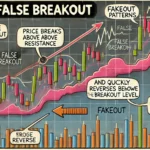Best Indicators for Day Trading and How to Use Them
Day trading needs fast decisions and knowing when to enter and exit the market. It also requires understanding market behavior. Traders use technical indicators to analyze trends, momentum, and potential reversals. This guide will cover the top indicators for day trading and how to use them.
Why Indicators Matter in Day Trading
Technical indicators give traders real-time insights into the market. They show trends, measure volatility, and confirm trade signals. The right indicators can make trading more accurate and profitable, reducing emotional decisions.
Top Indicators for Day Trading
| Indicator | Type | Best Used For |
|---|---|---|
| Moving Averages (MA) | Trend | Identifying overall market direction |
| Relative Strength Index (RSI) | Momentum | Spotting overbought and oversold conditions |
| MACD (Moving Average Convergence Divergence) | Trend & Momentum | Confirming trend reversals and strength |
| Bollinger Bands | Volatility | Detecting price breakouts and market conditions |
| VWAP (Volume Weighted Average Price) | Volume | Measuring fair value and institutional activity |
| Stochastic Oscillator | Momentum | Identifying potential reversals |
| ATR (Average True Range) | Volatility | Assessing market volatility and setting stop-loss levels |
How to Use Each Indicator in Day Trading
1. Moving Averages (MA)
Moving averages smooth out price fluctuations and help identify trends.
Best Strategy: Use a 50-period MA and a 200-period MA for trend confirmation.
Buy Signal: When a short-term MA crosses above a long-term MA (golden cross).
Sell Signal: When a short-term MA crosses below a long-term MA (death cross).
2. Relative Strength Index (RSI)
RSI measures momentum by comparing recent gains and losses.
Best Strategy: Use the 70 and 30 levels as overbought and oversold signals.
Buy Signal: RSI below 30 indicates a potential reversal upward.
Sell Signal: RSI above 70 suggests an overbought market likely to decline.
3. MACD (Moving Average Convergence Divergence)
MACD helps identify trend changes and momentum shifts.
Best Strategy: Watch for MACD line crossing above the signal line as a buy signal.
Sell Signal: When the MACD line crosses below the signal line.
Additional Confirmation: Look for divergence between MACD and price movement.
4. Bollinger Bands
Bollinger Bands help assess market volatility and potential breakouts.
Best Strategy: Prices touching the upper band indicate overbought conditions, while touching the lower band suggests oversold conditions.
Buy Signal: Price bouncing off the lower band.
Sell Signal: Price touching or breaking the upper band.
5. VWAP (Volume Weighted Average Price)
VWAP helps traders see if a stock is over- or undervalued.
Best Strategy: Buy when the price is below VWAP and sell when it’s above VWAP.
Best Used In: High-volume stocks and intraday trading.
6. Stochastic Oscillator
The stochastic oscillator shows momentum and predicts when things might change.
Best Strategy: Buy when the indicator goes below 20 and crosses upward.
Sell Signal: Sell when it goes above 80 and crosses downward.
7. ATR (Average True Range)
ATR shows how volatile a stock is, helping set stop-loss levels.
Best Strategy: Higher ATR means higher volatility. Adjust stop-loss levels accordingly.
Tip: Avoid trading in very high ATR conditions unless you’re experienced.
Combining Indicators for Better Day Trading Strategies
Using one indicator alone might not be the best. Mixing multiple indicators can improve results.
Example of a Winning Strategy:
First, find the overall trend using moving averages.
Then, use RSI or MACD to check momentum.
Look for Bollinger Band breakouts or VWAP positioning.
Finally, set stop-loss levels based on ATR values.
Common Mistakes to Avoid
Overloading Indicators: Too many indicators can cause confusion and conflicting signals.
Ignoring Market Conditions: Indicators work best with an understanding of news, trends, and market sentiment.
Not Backtesting Strategies: Always test strategies on historical data before trading live.
Final Thoughts
The best indicators for day trading help traders make informed decisions. They improve accuracy and manage risk well. Whether using trend, momentum, or volatility indicators, the key is to find a strategy that fits your trading style. By combining indicators wisely, traders can gain an edge and improve their daily trading results.
FAQs
1. What is the best indicator for day trading?
There’s no single best indicator. Traders often mix moving averages, RSI, and VWAP for better results.
2. Can I day trade with just one indicator?
While possible, using at least two or three indicators is recommended to confirm signals.
3. How do I choose the right indicators for my strategy?
Think about your trading style. If you follow trends, use moving averages and MACD. For volatility, Bollinger Bands and ATR are better.
4. Do indicators work the same for all assets?
Some indicators work better in certain markets. For example, VWAP is great for stocks but not as effective in forex.
5. Should I change indicators frequently?
No, stick to a tested strategy and refine it over time. Changing indicators too often is not effective.
By mastering these indicators and using them strategically, traders can navigate day trading confidently.














